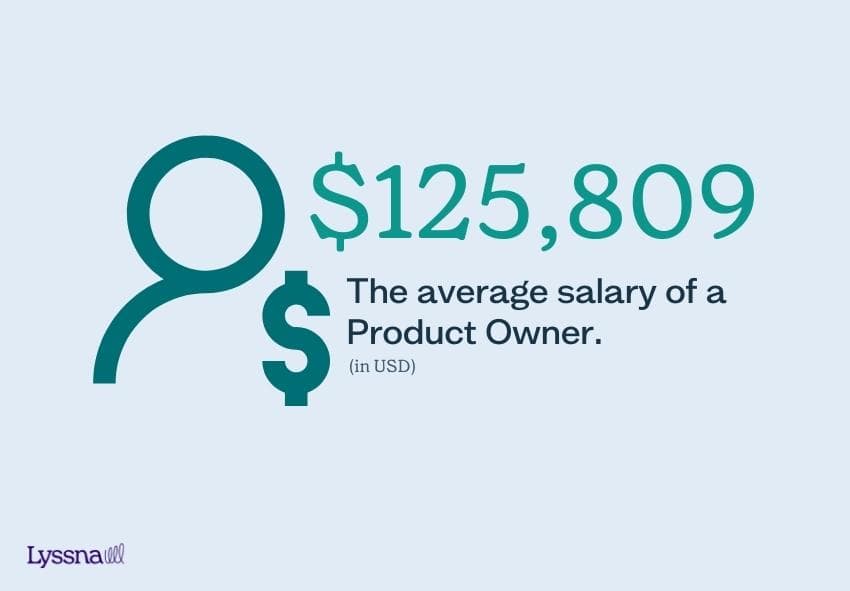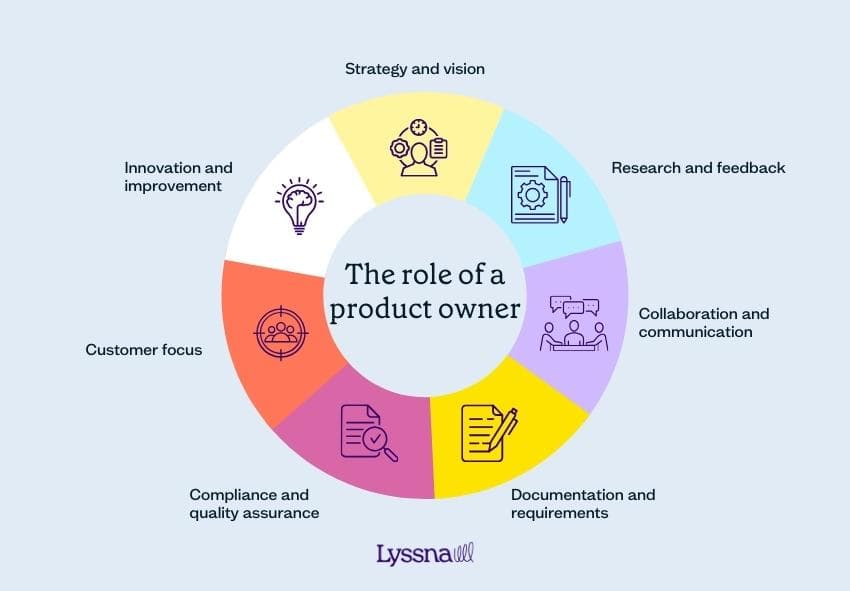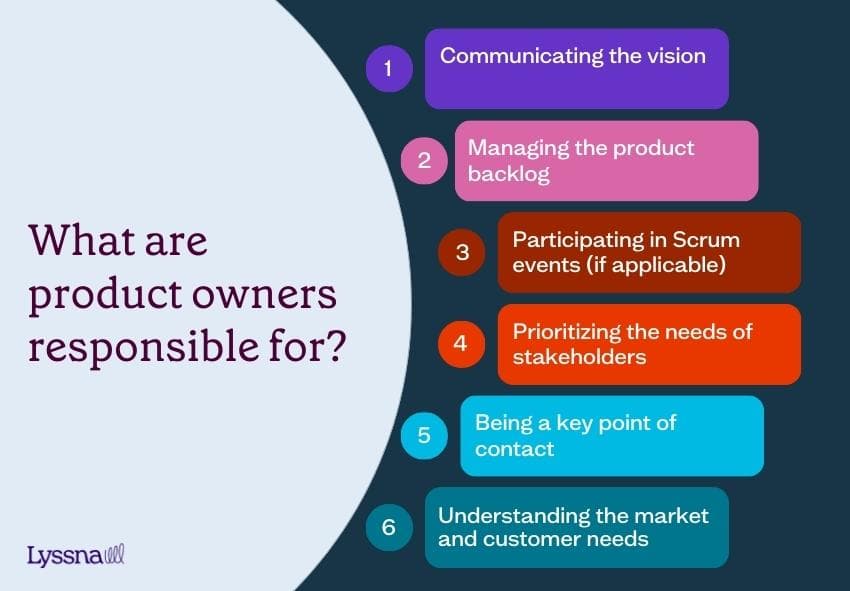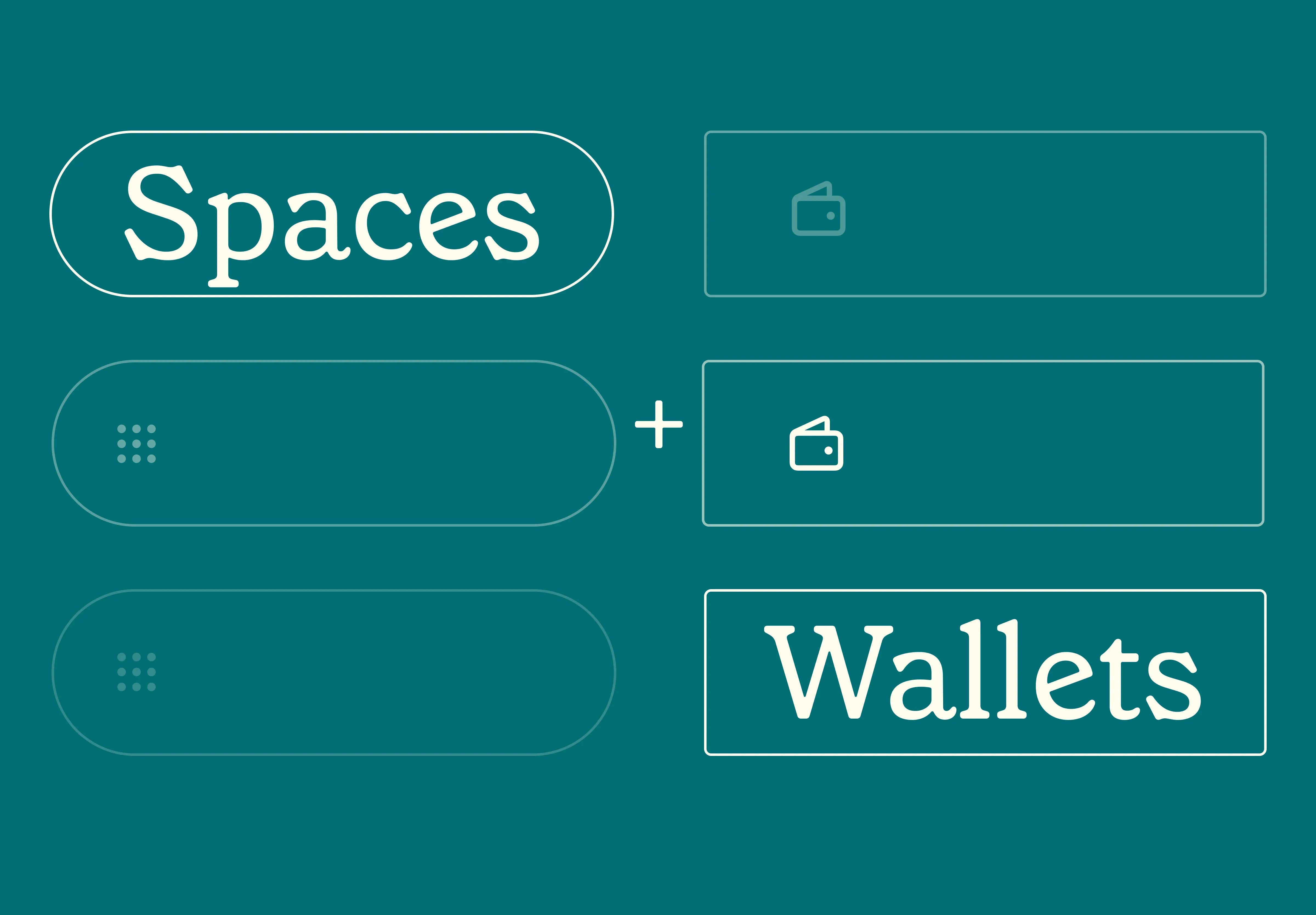14 Nov 2025
|11 min
What is a product owner?
Gain an understanding of the role and responsibilities of a product owner, along with the required skills, insights from an expert, and tips for transitioning into this career path.

Many folks in the SaaS industry will have heard of (and may even be) product managers, but product owners (POs) are a little more elusive. As we mentioned in our article on what a product manager does, product owners have a slightly different role in the business, but it’s just as important.
With an average salary of $125,809 in the US (at the time of writing), a product owner career is also financially rewarding.

So, what’s involved in a product owner role? By the end of this article, you’ll be able to answer the following questions:
What is a product owner?
What does a product owner do?
What are product owners responsible for?
What skills are required for the role?
How do you become a product owner?
This will help you determine whether becoming a product owner is the right career path for you.
What is a product owner?
A product owner is one of the key roles within a product development team. While a product manager creates the product strategy, a product owner executes the strategy with team members.
According to Ryan McKenzie, Co-Founder and CMO of Tru Earth, his company's product owners are critical to the success of his business:
“They play a very integral part in our team. In our company, Product Owners present a unique and pivotal role. They act as a liaison between multiple teams – namely, the development team, stakeholders, and users.”
Depending on the development methodologies your company employs, product owners are also referred to as Agile or Scrum product owners.
What is a product owner in Agile?
In teams using the Agile framework, product owners prioritize and oversee tasks in the development process. The PO in an Agile team is the key link between customer needs and product strategy implementation. In this case, their role is very similar to project management.
What is a scrum product owner?
The scrum framework is another agile project management method, developed as The Scrum Guide by Ken Schwaber and Jeff Sutherland. In this case, a product owner is a key member of the scrum team, and they clarify the product goal and vision to the rest of the team.
Scrum product owners define user stories and create a product backlog. It’s also easy to confuse POs and scrum masters in this framework, but scrum masters primarily focus on facilitating the scrum process instead of having product-related responsibilities.
How is a product owner different from a product manager?
As mentioned in our article on product managers, the purpose of product owners is to execute the strategy and product vision that product managers create. To better understand the difference between product owner and product manager, it's useful to look at how they collaborate with product managers acting as the strategic arm of a development team, and product owners functioning as the tactical arm.
It’s also fair to say that product managers and product owners together represent a cross-functional team in product or software development departments.
Your go-to user research platform
The best teams use Lyssna so they can deeply understand their audience and move in the right direction — faster.
What does a product owner do?
Product owner roles are quite varied and challenging, with lots of decision-making involved on a day-to-day basis. But what does that work look like?
Let’s return to Ryan’s team:
“Daily responsibilities vary but often revolve around planning and prioritizing product feature backlogs, aligning those with the business's goals. Our Product Owners are required to work closely with the development team to ensure all business, technical, and user requirements are met. These requirements are often derived from conducting market research or customer feedback.”
Looking at various product owner job descriptions, we can group product owner tasks like so:
Strategy and vision: Communicate product strategies, product roadmaps, and visions that align with business objectives, customer needs, and market trends.
Research and feedback: Conduct market research and gather feedback, plus analyze product metrics to identify opportunities, challenges, and areas for improvement.
Collaboration and communication: Work closely with cross-functional teams and stakeholders. Ensure successful product launches, growth, and a focus on continuous discovery and delivery to drive ongoing improvement.
Documentation and requirements: Maintain product documentation and backlog management, and define clear product requirements using user stories.
Compliance and quality assurance: Ensure products adhere to industry standards, regulations, and security protocols. This involves working closely with legal, compliance, and engineering teams.
Customer focus: Collaborate with customer support to address inquiries and improve customer satisfaction, and utilize insights from user research to inform product development.
Innovation and improvement: Drive the enhancement of products and services by focusing on user experience, innovation, and the continuous evolution of offerings to meet changing needs.
This is quite a list of tasks, which points to why product owners can earn the salaries they do.

What are product owners responsible for?
The grouped tasks above give a good idea of the key tasks product owners are responsible for. But let’s define the overall responsibilities in more detail.
Depending on how your business likes to break down roles, you might see a product owner managing 5–8 key responsibilities. Experienced product owners can manage any of these responsibilities throughout the product lifecycle.

1. Communicating the vision
Product owners work with key stakeholders to ensure everyone is on the same page. They do this by creating a product roadmap to define milestones and keep track of progress.
2. Managing the product backlog
One of the most important tactical responsibilities for a product owner is communicating the product goals and product backlog items. The product backlog is a live document that changes through new product development iterations.
3. Participating in Scrum events (if applicable)
If your business uses the Scrum framework, POs will participate in Scrum events, including sprint planning and sprint reviews, sprint retrospectives, and backlog refinement.
4. Prioritizing the needs of stakeholders
POs need to be able to manage the needs of various stakeholders, including juggling scope, time, and budget constraints. A good product owner can make decisions and trade-offs that ultimately optimize for the best outcome.
5. Being a key point of contact
POs need to be able to communicate with different teams and stakeholders. Part of being a key point of contact is anticipating problems and managing them effectively to keep projects running smoothly.
6. Understanding the market and customer needs
Working with product managers, POs need to learn about what informs the product strategy – including the product value for customers, their needs and wants, and what will determine the product’s success. With this understanding, a PO will then break these elements down into actionable tasks for the product development team to implement.
What skills do you need as a product owner?
Given the challenges involved, you’ll need various skills to succeed in the product owner role. Ryan shares the skills he looks for when hiring product owners:
“The skills required to succeed are multifaceted. Among the most crucial are excellent communication skills, to ensure clarity and alignment amongst the team and stakeholders; vision and creativity, to continuously work towards enhancing the product; and strong leadership skills, to inspire the team and drive the project towards completion.”
Beyond communication, leadership, and creativity, what other skills do you need? Another look at PO job descriptions gives us more requirements:
Being able to present information effectively.
Strong organizational skills
The ability to manage in-person and remote teams.
Excellent problem-solving skills.
Experience using software programs such as Jira, Confluence, Figma, Azure DevOps, or other project management software.
Knowledge and experience in using agile approaches, including the Scaled Agile Framework (SAFe).
Industry-specific knowledge, depending on the business.
These are not an exhaustive list of skills you’ll need to succeed as a product owner, since each company might have different needs, but it should give you a general idea.
How do you become a product owner?
As you can likely tell by looking at the tasks, responsibilities, and skills required for the job, becoming a product owner isn’t a walk in the park. Looking at various job descriptions, a potential product owner needs at least a related bachelor’s degree (sometimes a master's is preferred) and previous experience as a product owner.
Of course, if you’re looking to become a product owner for the first time, previous experience in the role isn’t something you’ll be able to offer. So what can you do?
Thankfully, Ryan shares some great insights for hopeful POs:
“In terms of transitioning into the role, the path varies. Some move into the role after having been experienced project managers, others have a strong technical background that gives them unique insights into product details, and still, others have a marketing background that lends itself to understanding user requirements in a very nuanced way.
Some utilize specific training courses that offer certifications, while others learn on the job and translate their previous experiences into this role. In the end, what matters most is a deep understanding of both the customer needs and the company's strategic goals, and the ability to meld those two realities into a successful product roadmap.”
The specific training and certifications Ryan mentions relate to Agile or Scrum certifications from reputable vendors such as Scrum.org and Scrum Alliance. Completing certifications from these companies can give you a much-needed boost to your resume if you don’t have previous on-the-job experience.
Start using the right tools for your new career
Beyond getting experience using the project management tools mentioned above, usability testing is another key area that’s important to both product managers and product owners.
Getting feedback from customers is critical during the product development process and helps to inform product owners what proposed improvements customers need, which also feeds into product backlog documentation.
With Lyssna, you can conduct both moderated and unmoderated usability tests such as:
You can use these tests at various stages of the product development process, with each method providing different perspectives and insights for your team.
Start your product owner career by gaining experience using the software you’ll need in your role.
Elevate your research practice
Join over 320,000+ marketers, designers, researchers, and product leaders who use Lyssna to make data-driven decisions.

Alexander Boswell
Technical writer
Alexander Boswell is a product-led content writer and researcher with a background in marketing strategy and consumer behaviour. When he’s not writing, he’s playing baseball and D&D.
You may also like
Stay in the loop by signing up for our newsletter
We'll keep you updated with the latest tools & insights to elevate your research game.





